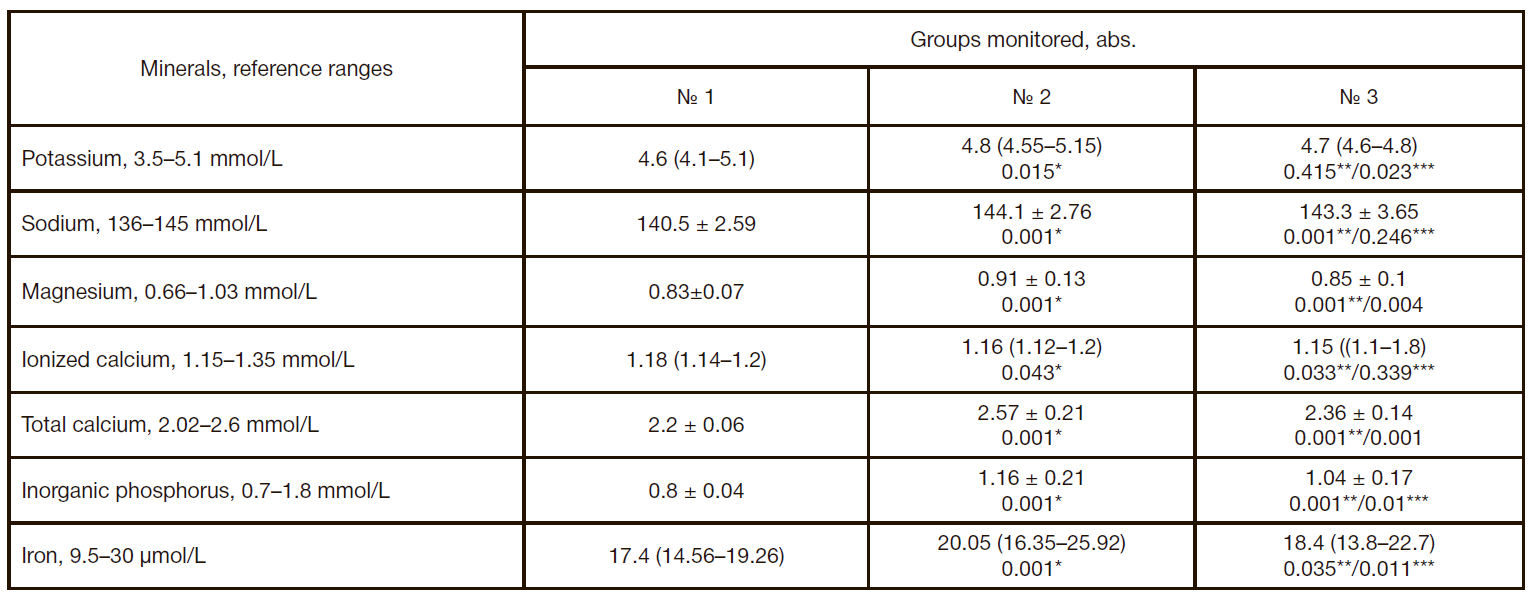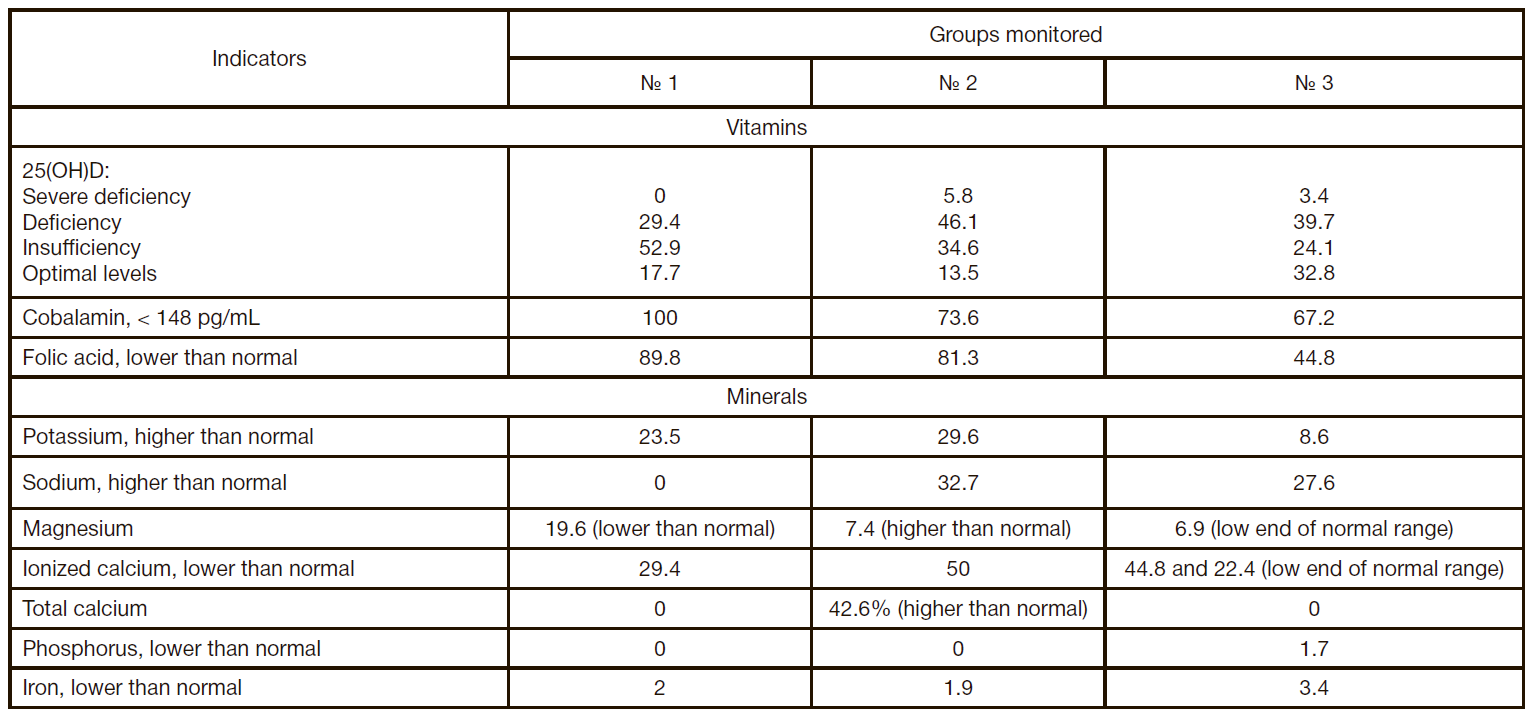
This article is an open access article distributed under the terms and conditions of the Creative Commons Attribution license (CC BY).
ORIGINAL RESEARCH
Assessment of micronutrient levels in the military personnel serving in various climatic zones of Russia
1 Professor V.F. Voino-Yasenetsky Krasnoyarsk State Medical University, Krasnoyarsk, Russia
2 Privolzhsky Research Medical University, Nizhny Novgorod, Russia
3 Erisman Federal Scientific Center of Hygiene, Mytishchi, Russia
Correspondence should be addressed: Rofail S. Rakhmanov
Minin and Pozharsky Sq., 10/1, Nizhny Novgorod, 603950, Russia; e-mail: ur.liam@35far
Author contribution: Rakhmanov RS — developing the study concept and design, manuscript writing; Bogomolova ES — editing, approval of the final version of the article; Narutdinov DA — primary data acquisition; Razgulin SA — literature review; Istomin AV — statistical data processing and data interpretation; Shurkin DA — statistical data processing.
Compliance with ethical standards: the study was approved by the Ethics Committee of the Privolzhsky Research Medical University (protocol № 4 of 14 March 2022), it was carried out in accordance with the ethical principles stipulated in the Declaration of Helsinki of the World Medical Association; all servicemen submitted the informed consent to participation in the study.


